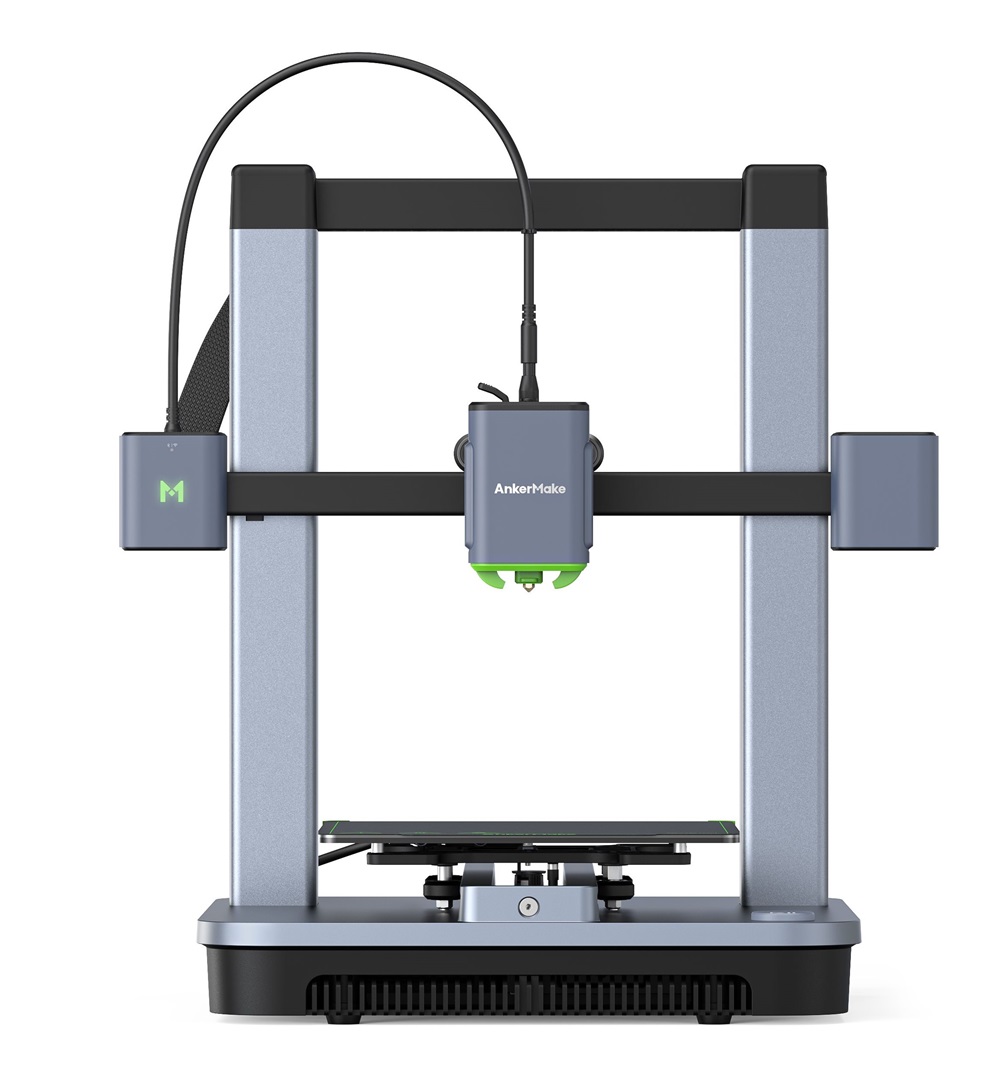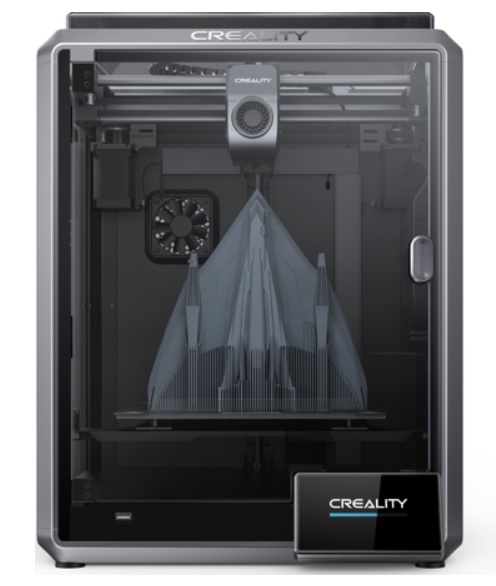Compare M5C vs K1
Comparison between the best 3D printers
Choose the best 3D printer at the best price. The cheapest 3D printers are here.
Buy a 3D printer here with 3D Fila.
 |
 |
|
| Model | M5C[BUY M5C] |
K1[BUY K1] |
| Printing Material | Filament | Filament |
| Buy Filament for AnkerMake M5C | Buy Filament forCreality 3D K1 | |
| Estimated price | $399,00 | $399,00 |
| Manufacturer | AnkerMake | Creality 3D |
| Release Year | 2023 | 2023 |
| Print Volume [mm] | 220x220x250 | 220x220x250 |
| Printer Size [mm] | 466x374x480 | 355x355x480 |
| Weight [kg] | 9,6 | 12,5 |
| Power Loss Recovery | YES | YES |
| Enclosed printer | NO | YES |
| Bed Leveling | Automatic | Automatic |
| Filament End Sensor | YES | YES |
| Bed type | Heated | Heated |
| Power supply system | Direct Drive | Direct Drive |
| Standard nozzle | 0,4 | 0,4 |
| Maximum Nozzle Temperature [°C] | 300 | 300 |
| Maximum Bed Temperature [°C] | 100 | 120 |
| Maximum printing speed [mm/s] | 500 | 600 |
| Filament holder | YES | YES |
| Camera for supervision | NO | NO |
| Recommended filaments | PLA, PETG, TPU, ABS, PA, PLA-CF, PETG-CF, PA-CF | ABS, PLA, PETG, PET, TPU, PA, ABS, ASA, PC, PLA-CF, PA-CF, PET-CF |
| Recommended slicers | AnkerMake Studio (macOS, Windows), Simplify3D, Ultimaker Cura, PrusaSlicer | Creality Print; Cura, Simplify3D e PrusaSlicer |
| Maximum Resolution [mm] | 0,1 | 0,1 |
| Processor | ||
| Display | Display touchscreen 4,3'' | |
| Power Supply | 350 W | 110/220V / 350W |
| Connectivity | Wi-Fi, USB-C, Bluetooth | Ethernet / USB / Wi-Fi |
| Operating systems | Windows, Linux e Macbook | Windows, Mac, Linux |
| Date of registration in the system | 2024-09-11 | 2023-04-17 |
| Release date | 2023 | 2023 |
| Extra features | The AnkerMake M5 printer stands out for its impressive print speed, reaching up to 500mm/s. It features AI print monitoring, an integrated camera for creating timelapses, auto-leveling bed with pressure sensor, direct extruder, flexible PEI-coated build plate, and Wi-Fi and USB-C connectivity. Assembly is quick and easy, and the printer is designed to deliver high print quality and ease of use. | The K1 is an extremely fast FDM 3D printer, reaching 600mm/s, 12 times faster than standard models. Equipped with a Core XY system and lightweight print head, it offers energy efficiency and high print quality. It stands out for its dual-gear extruder and quickly heated hotend, as well as dual cooling to prevent warping. Its robust structure ensures stability at high speed, with optimized software to speed up the printing process. |
| Support for multiple colors and materials (AMS and CFS) | NO | NO |
Notes * |
||
| Cost-benefit | 7 / 10 | 7 / 10 |
| Hardware | 2.8 / 10 | 4.2 / 10 |
| Tela | . | . |
| Print volume | 3 / 10 | 3 / 10 |
| Performance | 4 / 10 | 5 / 10 |
| [BUY M5C] | [BUY K1] |
Conclusion |
| In comparing the AnkerMake M5C and the Creality 3D K1, both of which are priced similarly and released in 2023, several key differences and features come into play. Both printers share the same print volume and maximum resolution capabilities, featuring automatic bed leveling, filament end sensors, and direct-drive power supply systems. However, the K1 stands out with its higher maximum printing speed of 600 mm/s, compared to the M5C's 500 mm/s. This speed advantage is influenced by the K1's Core XY design and lightweight print head, which promote efficient energy use and stability during high-speed operations. The K1 also has a maximum bed temperature of 120°C, which is beneficial for certain materials that require higher temperatures. In terms of physical design, the M5C is lighter and has a more compact footprint, while the K1, built with a more robust structure, is slightly heavier. The M5C offers an easy assembly process and some user-friendly features like a touchscreen display which enhances the overall usability. While both printers are capable of handling a variety of filament materials, the K1 supports a slightly wider range, including ASA and PC, which may appeal to users looking for more versatile printing capabilities. In summary, the choice between the two should be based on user priorities: the AnkerMake M5C may appeal to those seeking ease of use and a lightweight design, while the Creality 3D K1 particularly suits users interested in faster printing speeds and higher performance in handling diverse materials. Both options offer good value for their price, ensuring a solid choice in the realm of 3D printing. |

